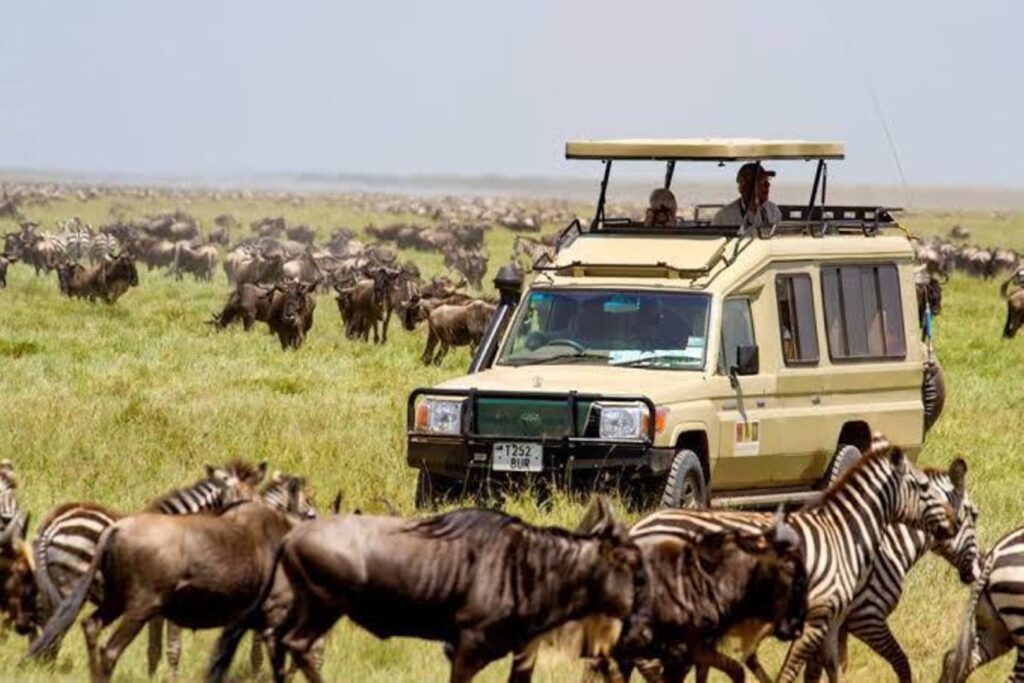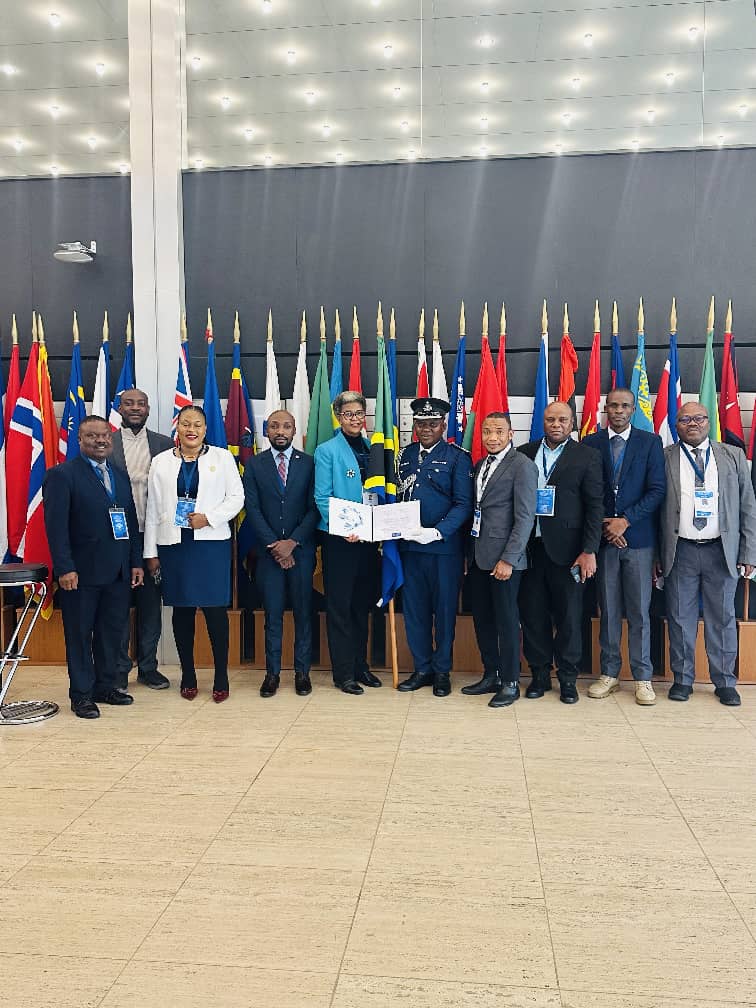
Wednesday 13th August 2025

By InAfrika Reporter
World Tourism Day soon arrives with Tanzania in a rare sweet spot: the country is winning awards, flights are multiplying, and the visitor mix is widening beyond the classic northern safari loop. The temptation is to call it a boom. The wiser reading is that the tourism system—parks, forests, airlines, marketing, communities—is learning to move in rhythm. The question is durability: what will make it last?
Begin with gravity. The World Travel Awards put fresh metal on the mantle: Tanzania as Africa’s Leading Destination 2025, the Serengeti once again Africa’s Leading National Park, and Tarangire newly recognised as Africa’s Leading Elephant Paradise National Park. Awards do not build roads or train guides, but they change behaviour at the margin: undecided travellers nudge itineraries toward Tanzania; repeaters add nights to catch Tarangire’s elephant theatre in the dry season; investors take another meeting. Kilimanjaro and Zanzibar also topped their categories this year, rounding out a coherent national brand built on mountains, migration and coast.
The statistics match the mood. Between January and May 2025, mainland arrivals reached 794,102, up 3.7% year on year, with Kenya and Burundi among the leading sources. On a longer view, the World Travel & Tourism Council estimates the sector contributed TSh 18.6 trillion in 2023—about 9.5% of GDP—while international and domestic visitor spending both set new highs. Put simply: tourism is not just a postcard; it is part of the macro story.
Connectivity explains a lot of this. Air Tanzania has turned long-haul anchors—direct links to Mumbai and Guangzhou—into dependable bridges, while regional and domestic maps have thickened. This year alone saw new Dar–Mtwara service, the return of large aircraft to Iringa, and a cooperation memorandum with Kenya Airways that reaches into maintenance, cargo and training. Add Dubai to the dependable trunk routes feeding beach-and-safari combinations, and the network effect becomes tangible. None of that is glossy, but it shortens trips and reduces friction, which in tourism is the difference between “maybe” and “booked”.
On the ground, the product is diversifying. TANAPA’s twenty-two national parks cover roughly 100,000 square kilometres, from lake islands to alpine meadows to the famous savannas. The system’s growth over the past decade—including the creation of Nyerere—gives itinerary designers room to spread demand beyond the Serengeti circuit. Pair that with the Tanzania Forest Services Agency’s portfolio—463 forest reserves, twenty-four plantations, vast mangrove belts and Eastern Arc nature reserves—and you have a second stanza to every safari, one that adds waterfalls, cloud forests and coastal creeks to the big-game chorus. tfs.go.tz Across the wider estate, protected wildlife areas cover roughly 26.6% of the country—remarkable ecological capital to steward and monetise with care.
Sustainability is no longer a sidebar. In the parks, transformation looks like early-burning to prevent catastrophic fires, concessions that favour lighter footprints, and community outreach that turns conservation revenues into clinics, classrooms and water points. TANAPA’s Support for Community-Initiated Projects (SCIP) has historically set aside a defined share—commonly cited as 7.5%—of budgets for such works, with villages often expected to shoulder around 30% of costs; the exact percentages have varied over time and by context, but the mechanism is durable and understood by neighbouring communities.
Forests add a different logic of sustainability. Catchment reserves keep taps running in towns; mangroves buffer coasts and store carbon; nature reserves protect endemics that birders will cross oceans to see. TFS reports an average of one million cubic metres of plantation timber a year—unglamorous numbers that relieve pressure on native forests and generate revenue for rangers, trailheads and interpretation. Amani’s butterflies, Uluguru’s ridges and Rufiji’s roots are not detours; they are reasons to stay an extra day.
Marketing has caught up with reality. The East African Community is finally selling itself as a bloc under the “Visit East Africa: Feel the Vibe” banner, giving multi-country trips a clean narrative at the big trade shows. That is not a threat to brand Tanzania; it is a multiplier: business in Nairobi, safari in Nyerere, debrief in Zanzibar, one week, one logic. The more the region behaves like a region, the less travellers treat borders as warnings rather than waypoints.
Risk is not absent. Roads can shake the romance out of a morning; climate shifts scramble patterns guides once predicted; price creep can send value-seekers to neighbours; and over-performance by a few parks can starve others of attention and maintenance. Academic work reminds us that a handful of parks generate the bulk of revenues, a concentration that buys resilience in a bad year but argues for smarter curation in a good one. That means pushing Kitulo in bloom, Rubondo for lake country, Ugalla River for wetland purists, and Tarangire as a stand-alone elephant spectacle, so pressure spreads and benefits follow.
The opportunity now is to turn applause into operating discipline. That means boring habits done well: publish fee calendars early; keep airstrips graded; post trail conditions online; align airline schedules with park transfer windows; maintain a live dashboard that shows where conservation fees go—kilometres of track maintained, ranger posts staffed, hectares of mangrove patrolled, guides certified. Transparency is not a favour; it is a sales tool in a market that is learning to ask harder questions about impact.
If there is a north star, it is range. Range in price points that keep domestic travel alive after the pandemic proved its value. Range in geographies that give the Serengeti room to breathe. Range in experiences that let a family stitch elephants and baobabs to a cloud-forest morning and a spice-and-stone weekend. Range in connectivity that makes a Dreamliner feel like a bridge, not a gamble. And range in governance—from SCIP ledgers to full Tourism Satellite Accounts—so ministers and mayors can defend budgets with numbers that withstand scrutiny.
World Tourism Day is a calendar moment, not a verdict. But this year’s snapshot is unusually encouraging: trophies that open doors, numbers that justify ambition, routes that close distance, and institutions that—slowly—are aligning around service, science and community legitimacy. The task now is to make the momentum ordinary. If Tanzania can keep its promises in small ways—on-time flights, honest maps, clean loos, trained guides, potholes fixed before the rainy season—and in large ways—wildlife corridors protected, mangroves restored, data published—the sector will keep compounding.
That is the kind of tourism a country can plan around: one where a morning in Tarangire, an afternoon in Magamba and an evening flight out of Dar feel not like a feat of logistics but like the natural order of things. The moment is here. Making it last is a deliberate, shared choice.


